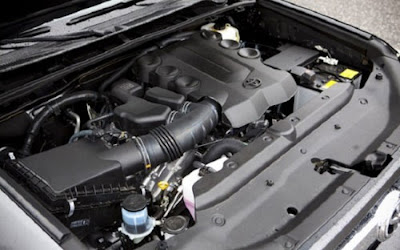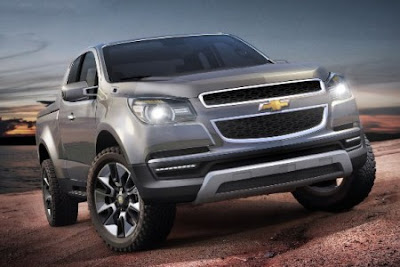2013 Toyota 4Runner
The Toyota 4Runner may be a mid-size SUV manufactured by Toyota and sold throughout the world from 1984 to this. In Japan it absolutely was referred to as the Toyota Hilux Surf. The original 4Runner was a compact SUV and very little more than a Toyota pickup truck with a fiberglass shell over the bed, however the model has since undergone vital freelance development into a cross between a mid-size and a full-size SUV. All 4Runners have been designed at Toyota's Tahara plant in Tahara, Aichi, Japan or at Hino Motors' Hamura, Japan plant, and in Brazil. Its mid-size crossover SUV counterpart is that the Kluger/Highlander.
The Toyota pickup (upon which the 4Runner was originally primarily based) underwent a serious redesign in 1983 for the 1984 model year. Several other automakers were introducing mid-size SUVs within the mid Eighties (e.g., Ford Bronco II, Chevrolet S-ten Blazer, Nissan Pathfinder) and also the pressure mounted on Toyota to develop a competing model. Instead of developing an entirely new vehicle, Toyota took their existing short-bed pickup frame, created some straightforward modifications, and added an open one-piece body with a removable fiberglass prime (much like the complete-size Ford Bronco and Chevrolet K5 Blazer), and removable rear seat.
Thus, the primary generation 4Runner is nearly mechanically clone of the Toyota pickup. All initial generation 4Runners had two doors and were indistinguishable from the pickups from the dashboard forward. Nearly all changes were to the latter [*fr1] of the body; of course, as a result of the rear springs were not upgraded up-to-date the additional weight from the rear seats and fiberglass high, these early models tended to suffer from a sagging rear suspension.
The first 4Runners were introduced in 1984 as 1984½ models. For this initial year, all models were equipped with black or white fiberglass tops. An SR5 trim package was offered that upgraded the interior: extra gauges, better materials, and a rear seat were standard with the package. All 1984 models were equipped with the carbureted a pair of.4 L 22R engine and were all available with a four-wheel- drive system that drove the front wheels through a solid front axle.
In 1986, all American-market Toyota pickup trucks underwent a major design change as the suspension was changed from a solid front axle to an independent front suspension. Track width was also increased by 3 inches. These changes created the trucks more comfy on-road, and improved stability and handling. However, this modification arguably decreased the truck's off-road capabilities. Outside the US, the Hilux Surf conjointly gained the new freelance suspension design, marketed as Hi-Trac. The pickups in those markets retained the more rugged and capable, if less refined, solid axle configuration. The 4Runner grille changed from the three segment sort to the two phase grille on all 4Runners in 1986. Tops were color-matched on blue, red and a few gold 4Runners, while alternative body colors were still sold with white or black tops. During 1984–1986 several 4Runners were imported to the US without rear seats. With only 2 seats the vehicle could be classified as a truck and might skirt the higher customs duties placed upon sport and pleasure vehicles. Most had aftermarket seats and seat belts added by North American dealers once they were imported.
A turbocharged version of the 22R-E engine was also introduced in 1986, although this engine is significantly rarer than the base 22R-E. It seems that each one turbocharged 4Runner models sold within the US were equipped with an automatic transmission, though a five-speed manual might still be ordered within the turbocharged pickups. Most Turbo 4Runners were equipped with the SR5 package, and every one turbo trucks had as standard a heavier rear differential. Low-possibility models had a little light within the gauge cluster to indicate turbo boost, whereas more plush vehicles were equipped with an all-digital gauge cluster that included a lift gauge. Turbocharged and naturally aspirated diesel engines were conjointly accessible in the pickups at this point further, but it seems that no diesel-powered 4Runners were imported to the United States.
All 4Runners came with Toyota's Star Safety System which includes anti-lock brakes, electronic brake force distribution, brake assist, traction control and Vehicle Stability Control. Side torso airbags for the front rows plus aspect curtain airbags for the front and back rows were optional on 2005–2007 models and became commonplace on 2008 models.
The April 2007 Insurance Institute for Highway Safety report also shows the 4Runner to possess one in all rock bottom death rates for all vehicles on the road at solely thirteen deaths per million registered vehicle years during calendar years 2002–2005. Only the Infiniti G35 and BMW 7 series had lower rates.[three] The IIHS rates the 4Runner as "Good" overall in the frontal offset crash test and "Good" overall within the aspect impact test on vehicles with side airbags, these scores rank the 4Runner as among the best truck primarily based mid-size SUV's in crash tests. The 4runner received the "Good" rating in 13 of the 14 measured classes.
2013 Toyota 4RunnerThe Toyota pickup (upon which the 4Runner was originally primarily based) underwent a serious redesign in 1983 for the 1984 model year. Several other automakers were introducing mid-size SUVs within the mid Eighties (e.g., Ford Bronco II, Chevrolet S-ten Blazer, Nissan Pathfinder) and also the pressure mounted on Toyota to develop a competing model. Instead of developing an entirely new vehicle, Toyota took their existing short-bed pickup frame, created some straightforward modifications, and added an open one-piece body with a removable fiberglass prime (much like the complete-size Ford Bronco and Chevrolet K5 Blazer), and removable rear seat.
Thus, the primary generation 4Runner is nearly mechanically clone of the Toyota pickup. All initial generation 4Runners had two doors and were indistinguishable from the pickups from the dashboard forward. Nearly all changes were to the latter [*fr1] of the body; of course, as a result of the rear springs were not upgraded up-to-date the additional weight from the rear seats and fiberglass high, these early models tended to suffer from a sagging rear suspension.
The first 4Runners were introduced in 1984 as 1984½ models. For this initial year, all models were equipped with black or white fiberglass tops. An SR5 trim package was offered that upgraded the interior: extra gauges, better materials, and a rear seat were standard with the package. All 1984 models were equipped with the carbureted a pair of.4 L 22R engine and were all available with a four-wheel- drive system that drove the front wheels through a solid front axle.
In 1986, all American-market Toyota pickup trucks underwent a major design change as the suspension was changed from a solid front axle to an independent front suspension. Track width was also increased by 3 inches. These changes created the trucks more comfy on-road, and improved stability and handling. However, this modification arguably decreased the truck's off-road capabilities. Outside the US, the Hilux Surf conjointly gained the new freelance suspension design, marketed as Hi-Trac. The pickups in those markets retained the more rugged and capable, if less refined, solid axle configuration. The 4Runner grille changed from the three segment sort to the two phase grille on all 4Runners in 1986. Tops were color-matched on blue, red and a few gold 4Runners, while alternative body colors were still sold with white or black tops. During 1984–1986 several 4Runners were imported to the US without rear seats. With only 2 seats the vehicle could be classified as a truck and might skirt the higher customs duties placed upon sport and pleasure vehicles. Most had aftermarket seats and seat belts added by North American dealers once they were imported.
A turbocharged version of the 22R-E engine was also introduced in 1986, although this engine is significantly rarer than the base 22R-E. It seems that each one turbocharged 4Runner models sold within the US were equipped with an automatic transmission, though a five-speed manual might still be ordered within the turbocharged pickups. Most Turbo 4Runners were equipped with the SR5 package, and every one turbo trucks had as standard a heavier rear differential. Low-possibility models had a little light within the gauge cluster to indicate turbo boost, whereas more plush vehicles were equipped with an all-digital gauge cluster that included a lift gauge. Turbocharged and naturally aspirated diesel engines were conjointly accessible in the pickups at this point further, but it seems that no diesel-powered 4Runners were imported to the United States.
All 4Runners came with Toyota's Star Safety System which includes anti-lock brakes, electronic brake force distribution, brake assist, traction control and Vehicle Stability Control. Side torso airbags for the front rows plus aspect curtain airbags for the front and back rows were optional on 2005–2007 models and became commonplace on 2008 models.
The April 2007 Insurance Institute for Highway Safety report also shows the 4Runner to possess one in all rock bottom death rates for all vehicles on the road at solely thirteen deaths per million registered vehicle years during calendar years 2002–2005. Only the Infiniti G35 and BMW 7 series had lower rates.[three] The IIHS rates the 4Runner as "Good" overall in the frontal offset crash test and "Good" overall within the aspect impact test on vehicles with side airbags, these scores rank the 4Runner as among the best truck primarily based mid-size SUV's in crash tests. The 4runner received the "Good" rating in 13 of the 14 measured classes.
2013 Toyota 4Runner
2013 Toyota 4Runner
2013 Toyota 4Runner
2013 Toyota 4Runner
2013 Toyota 4Runner
2013 Toyota 4Runner








No comments:
Post a Comment